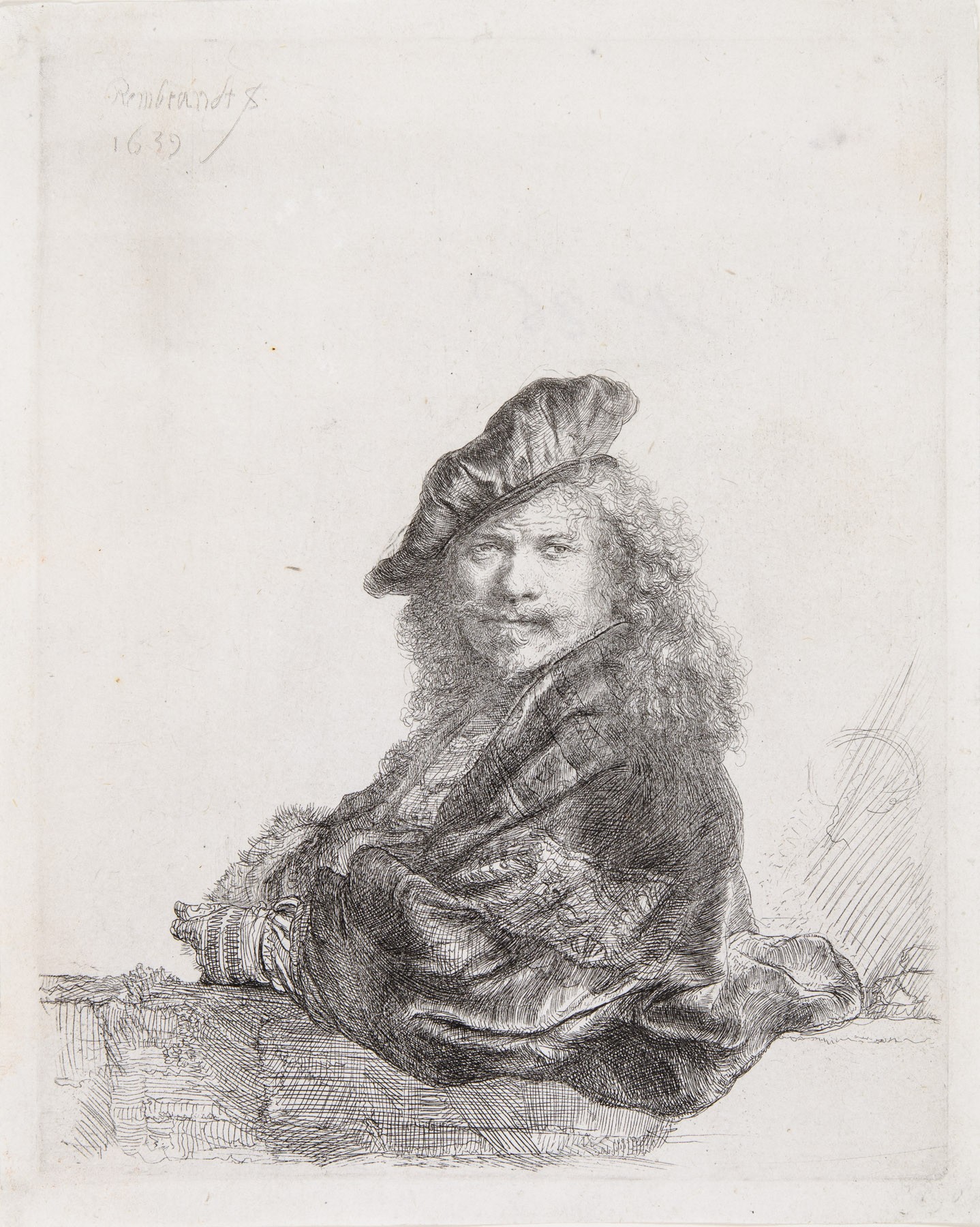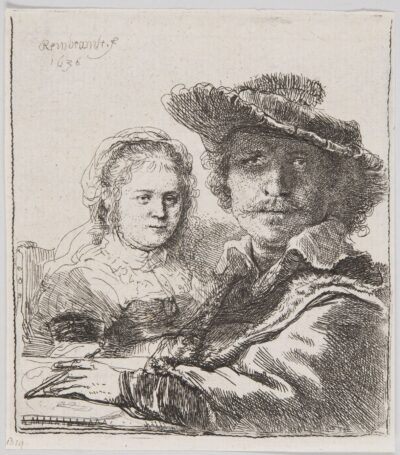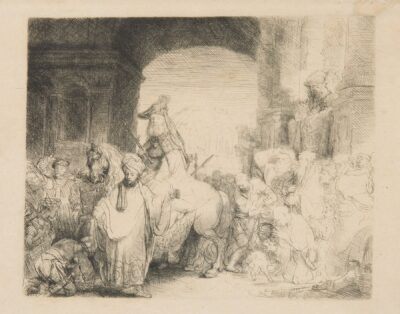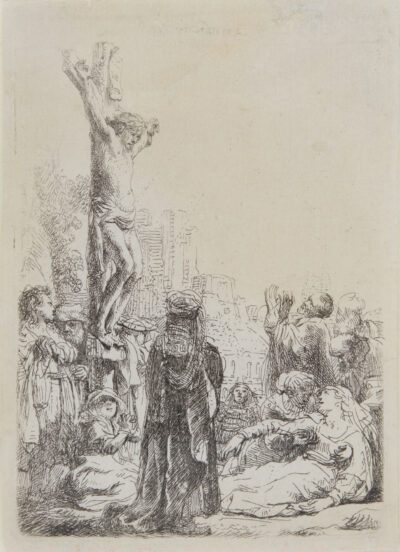Self-Portrait Leaning on a Stone Sill
Rembrandt Van Rijn
Self-Portrait Leaning on a Stone Sill
etching & drypoint
1639
An original Rembrandt Van Rijn etching & drypoint print.
1639
Original etching with touches of drypoint printed in black ink on laid paper.
Signed and dated in the plate upper left Rembrandt f. 1639.
A superb 17th century/lifetime impression of Bartsch and New Hollstein’s second and final state, Usticke’s second state of three, of this extremely rare etching (characterized by G. W. Nowell-Usticke in his 1967 catalogue Rembrandt’s Etchings: States and Values as “very scarce – a most desirable portrait”, and assigned his scarcity rating of “RR-” [50-75 impressions extant in that year]), printed after the previously unfinished contours of the right side of the capband were filled in.
Catalog: Bartsch 21 ii/ii; Hind 168; Biorklund-Barnard 39-E; Usticke 21 ii/iii; New Hollstein 171 ii/ii
Image Size: 8 1/16 x 6 7/16 inches
Sheet Size: 8 11/16 x 6 15/16 inches
Rembrandt’s vast production of self-portraits is unparalleled in the 17th century – in all the history of art, for that matter. About one-tenth of all the paintings he produced in the course of his career are self-portraits (the etched self-portraits are not as numerous or as chronologically continuous as the painted ones but still number well over twenty). Although it is useless to try to explain this unique phenomenon, it can surely be assumed with safety that the artist, whose profound interest in the human face is amply proved by the rest of his work, found a constant and reliable model in himself.
The probable inspiration for this strikingly self-conscious and dignified self-portrait was a painting by Titian (now in the National Gallery, London) that was regarded in the 17th century as a portrait of the Renaissance poet Ariosto. Many details of the painting, such as the unusual profile pose of the figure and the sleeve draped over the balustrade, recur in the etching. At the time the etching was made, the Titian painting was in Amsterdam, in the collection of the Portuguese merchant Alfonso Lopez. Most art historians regard Raphael’s portrait of Castiglione, which was auctioned in Amsterdam in 1639 (and which also ended up in Lopez’s collection), as the major source for the etching. At the time of the auction, Rembrandt made a pen sketch of the Raphael that contains elements lacking in that painting but which are present in the Titian and the etching. This would seem reason enough to assume that Rembrandt drew the Raphael drawing at a moment when the etching was already completed.
According to the 17th century Amsterdam art dealer Clement de Jonghe, Titian’s portrait of Ariosto represented a challenge to Rembrandt, and in the etching he tried not only to rival the great Venetian, but actually to surpass him. At the same time he would be demonstrating the superiority of painting, personified in the self-portrait, over poetry, personified by the portrait of Ariosto.




